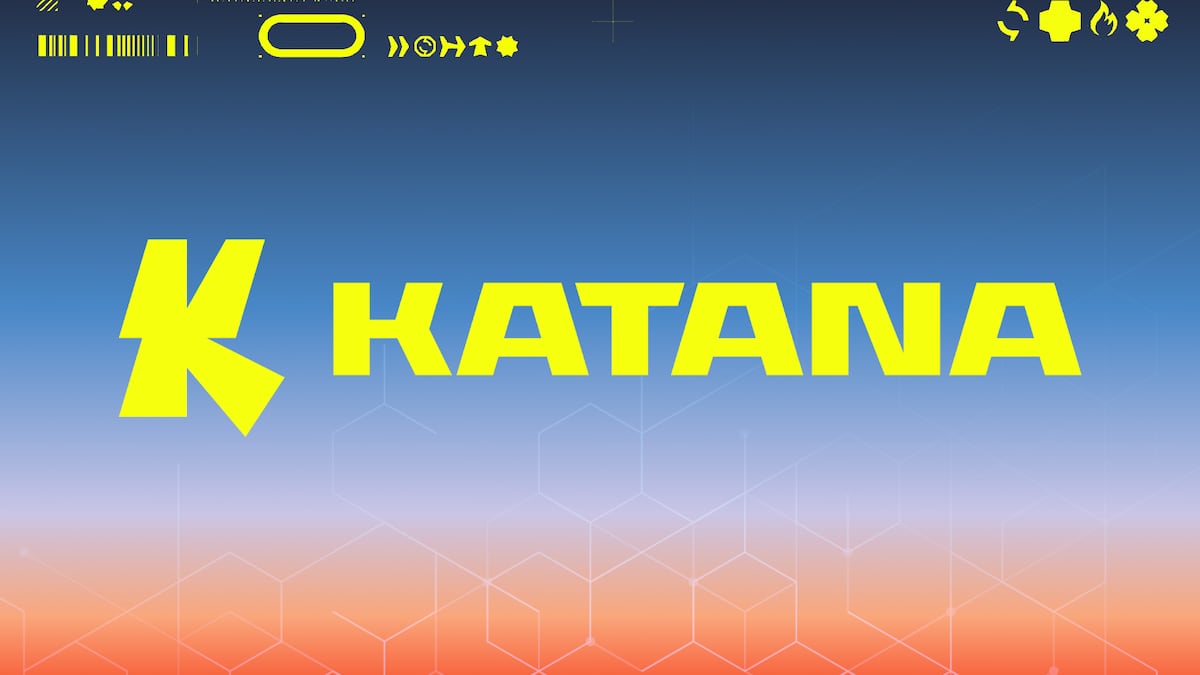Decentralised finance was founded on a powerful promise: to build a financial system that was open, efficient, and fundamentally productive. Yet, years into its evolution, much of the landscape is defined by fragmentation and inefficiency.
Liquidity is scattered across thousands of applications, each competing for a shallow pool of capital. Yield is often an illusion, driven by temporary token emissions that attract mercenary capital, only to disappear when the incentives run dry. Most assets on blockchains sit idle in wallets, contributing nothing to network value beyond headline TVL figures. DeFi ecosystems gain no depth or network effects from idle capital, resulting in persistent value leakage.
Katana is a direct response to this broken promise. It is a new, purpose-built chain designed from the ground up to solve these core problems and share chain revenue with its users. Katana’s mission is to create a focused, highly productive environment for DeFi, where every asset is put to work, liquidity is deep and shared, and yield is generated from real network activity, not just inflationary subsidies.
This is not just another blockchain hosting DeFi applications but rather a chain architected to be the core of a sustainable, efficient, and truly productive decentralised economy. This article, the first in a six-part series, introduces Katana’s vision and its foundational principles.
A Chain Purpose-Built for DeFi
Most blockchains are general-purpose platforms, causing DeFi protocols to compete with many other applications for blockspace and user attention. This results in fragmentation, and liquidity gets divided among numerous DEXs and lending markets, resulting in high slippage for traders, inefficient capital allocation for providers, and a confusing experience for users.
Katana rejects this model. Instead of a sprawling, unfocused ecosystem, Katana concentrates liquidity and activity into a core set of foundational protocols. Anchored around a set of core applications, beginning with Morpho for lending and Sushi for spot trading, with a memecoin launchpad and a perpetual DEX coming soon.
This deliberate concentration creates a deep, shared liquidity layer that serves as a utility for the entire network. Hundreds of other applications, ranging from derivatives platforms to yield aggregators, can then build on this unified base, tapping into its deep liquidity without needing to bootstrap their own.
This architecture creates an entirely different environment, changing it from a “winner-takes-all” competition to a team effort where everyone benefits. By concentrating liquidity into core apps, Katana guarantees that traders always get the best execution, lenders and LPs earn more from higher capital utilisation, and developers can focus on composable innovation instead of fighting over a small slice of a fragmented market.
Productive Liquidity and Aligned Incentives
The central innovation of Katana is its concept of "productive TVL" In most DeFi ecosystems, assets bridged to a new chain sit idle in a wallet until a user actively deploys them. On Katana, bluechip assets (USDT, USDC, WETH, WBTC) are put to work from the moment they arrive.
When users bridge these assets from Ethereum to Katana, those assets are not idly locked away in an L1 bridge contract. They are deposited into yield-generating strategies on Ethereum, such as Morpho lending vaults. The yield generated from these positions flows back to Katana, where it is recycled back into the ecosystem to enhance onchain returns and deepen liquidity, creating a baseline of real, sustainable returns for users of the chain..
Furthermore, Katana aligns network growth with user incentives through its handling of sequencer fees. 100% of net sequencer fees, plus a portion of chain revenue, flow into Chain-owned Liquidity (CoL), a permanent, yield-bearing liquidity reserve managed by the Katana Foundation.
The chain itself becomes a primary liquidity provider, using its revenue to deepen the core markets on Morpho, Sushi, and other core apps. This creates a permanent, sticky liquidity base that grows in lockstep with network activity, benefiting every participant without relying on inflationary token rewards. Yield earned from CoL either compounds into more CoL or can be used as incentives in core app DeFi markets. This model rewards real activity and builds long-term stability, in line with Katana’s productive liquidity loop
The Katana Flywheel
These core principles combine to create a powerful, self-reinforcing cycle known as the Katana Flywheel. This flywheel is the engine that drives sustainable growth for the entire ecosystem. It operates in a simple, four-stage loop:
- Bridge: Users deposit assets from Ethereum through Katana’s innovative Vault Bridge, receiving vault bridge tokens (vbTokens) tied to Morpho vaults on Ethereum.
- Earn: The underlying assets generate real yield on Ethereum, which is periodically harvested by the Katana Foundation and redirected into DeFi incentives, Yearn vault donations, or CoL, boosting returns and liquidity depth for DeFi users.
- Build: Developers build applications on top of Katana’s deep, shared liquidity layer, creating new products and driving transaction volume without needing to fund their own liquidity pools with emissions.
- Reward: As network activity grows, so does chain revenue through Vault Bridge yield, sequencer fees, AUSD treasury yield, and yield earned from CoL. This revenue is reinvested as liquidity mining incentives and Chain-owned Liquidity, which further deepens the core markets, improves execution for traders, and increases the yield for users.
Each turn of the flywheel makes the next one more powerful. More assets lead to higher yields, attracting more builders, who in turn drive more activity, generating more revenue and further deepening liquidity. It is a virtuous cycle designed for sustainable, long-term growth.
A Radically Better User Experience
Ultimately, this sophisticated architecture translates into a simple and powerful user experience. For traders, the deep, concentrated liquidity means consistently low slippage and better price execution.
For liquidity providers and lenders, the combination of external yield and rewards from network activity results in higher, more sustainable returns on their capital. For builders, the ability to tap into a shared, chain-owned liquidity layer and boosted real yield via Vault Bridge allows them to launch and scale new applications faster and more efficiently than ever before.
Katana’s design principles of productive capital, concentrated liquidity, and shared network revenue with users all converge on a single goal: creating a better, more efficient, and more rewarding environment for everyone.
From Pommel to Point
This article has provided a high-level overview of Katana’s vision and its core architectural approach. It is a deliberate and fundamental rethink of how a decentralised financial ecosystem can be structured to endure and grow.
In the coming weeks, this series will dive deeper into the specific mechanisms that make this vision a reality. We will explore Katana’s unique veTokenomics, the technical innovation of the Vault Bridge, the philosophy behind its core applications, and its strategy for building resilient, chain-owned liquidity. Join us as we unpack the future of productive DeFi.


